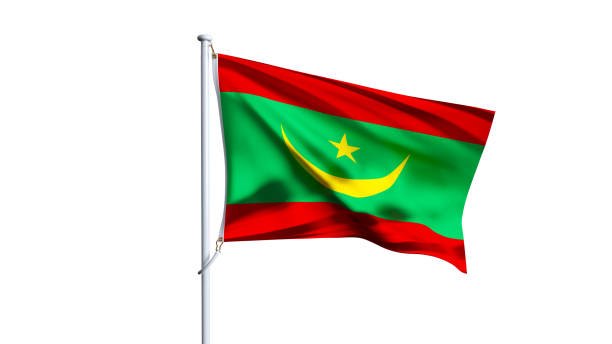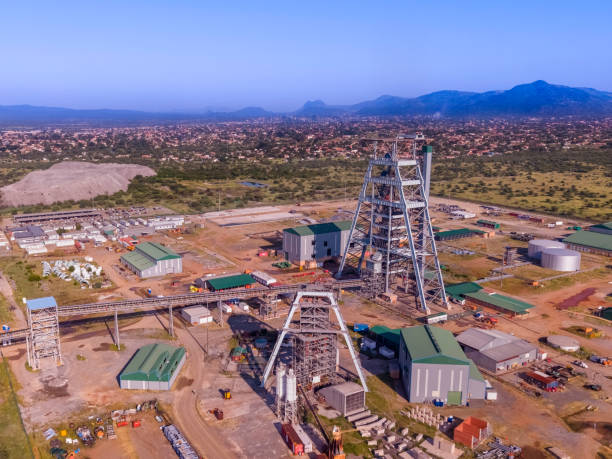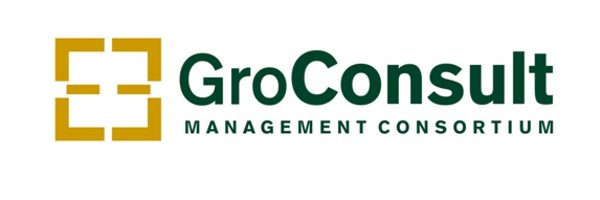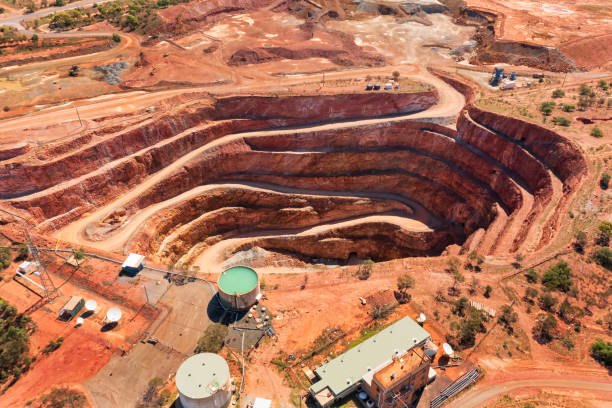Mauritania’s Potential lies in its untapped mining resources, offering a unique opportunity for economic transformation and sustainable development. As global demand for minerals rises, Mauritania is strategically positioned to become a key player in the mining sector. However, realizing this potential requires the right investment, expertise, and partnerships. This blog explores how GroConsult supports investors and governments in unlocking Mauritania’s wealth through responsible and efficient mining initiatives.
Here is the African Development Bank’s take on the sector and what it means for the Mauritanian economy.

A Promising Start
Mauritania’s Potential as a mining powerhouse is underscored by its vast reserves of untapped mineral wealth. Home to several billion tons of iron ore, Mauritania ranks as the second-largest producer of this essential mineral in Africa. In 2022 alone, the country produced an impressive 13 million tons of iron ore—an achievement driven by proactive government reforms and investor-friendly mining policies. According to the Extractive Industries Transparency Initiative, these strategic measures are positioning Mauritania as a rising force in the global mining landscape.
And guess what? Mining sources say they are well underway to double this by 2030!
How central is mining to Mauritania’s economy?
Mauritania’s Potential for sustained economic growth is reinforced by promising projections from the African Development Bank’s African Economic Outlook 2024. The report forecasts real GDP growth of 4.2% in 2024 and 5.5% in 2025—outpacing both African and global averages. These figures highlight the country’s strong economic trajectory, driven by strategic investments, expanding mining operations, and a stable policy environment that continues to attract international interest.
That above average growth is largely thanks to the activities of the mining sector.
Last year—2023—saw the sector generate many headlines.
Mauritania’s Potential in the mining sector is further demonstrated by the impressive performance of its key industry players. Gold mining company Tasiast Mauritanie Limited S.A. saw its production soar to 620.8 thousand ounces, while the state-owned SNIM (Société Nationale Industrielle et Minière de Mauritanie) achieved a record-breaking output of 14.01 million tons of iron ore. These milestones underscore the country’s growing capacity and competitiveness in the global extractive industry.
Those figures highlight how the extractive industries are not just pillars of the national economy: they are its most dynamic engines of growth.
Mauritania’s Potential as a mineral-rich economy is clearly reflected in the mining sector’s growing impact on national development. The sector’s contribution to GDP surged from 18% in 2021 to 24% in 2022, driven largely by increased extraction of metal ores—especially gold. It also played a vital role in national revenue generation, accounting for approximately 30% of budget inflows in 2022. Leading this growth were SNIM, Tasiast Mauritanie Limited S.A., and Mauritanian Copper Mines, each playing a pivotal role in unlocking the country’s economic promise through mining.
Sector developments and future plans
Mauritania’s Potential to become a key player in the global steel supply chain is rising as the industry shifts toward low-carbon and energy-efficient production methods. The growing demand for high-quality iron ores and DRI (Direct Reduced Iron) pellets—known for requiring less energy and generating less waste—positions Mauritania, and especially SNIM, to capitalize on this emerging trend. With its rich resources and strategic outlook, the country is well-placed to meet the evolving needs of sustainable steel production.
Mauritania’s Potential for long-term industrial growth is underscored by its ambitious plan to double iron ore production capacity to over 45 million tons annually within the next decade. Achieving this goal will require substantial investments in infrastructure, logistics, and processing capabilities. The country is placing a strong emphasis on producing high-grade iron ore and developing iron ore pellets—strategically aligning with the global transition to cleaner, more sustainable steelmaking practices.
Medium to longer terms plans also include moving up the value chain to the production of green steel, initially steel pellets. However, electricity is the backbone of these industrial ambitions, and in parallel, Mauritania is also eyeing the green hydrogen market, aiming to become a hub for this clean energy source. The synergy between mining, green hydrogen, and gas field development will require substantial infrastructure, benefiting not just the mining sector but the broader economy.
The African Development Bank’s role
The African Development Bank has been a key partner in Mauritania’s journey. The Bank has invested heavily in SNIM’s infrastructure, including a $46.9 million loan to widen the access channel to the mineral port of Nouadhibou. This has boosted iron exports and contributed to state revenues. The Bank is also contributing to addressing the energy challenge through initiatives like the Desert-to-Power project, promoting solar energy and improving access to electricity. The Bank’s financial support goes hand in hand with a strong commitment to the country’s compliance with environmental and social standards. This ensures that the benefits of mining are shared widely and sustainably.
Green hydrogen is another exciting frontier. The Bank is providing technical assistance to develop hydrogen plans and attract private sector investments. This aligns perfectly with Mauritania’s goal to produce green steel, adding value to its mining sector.
On a visit to the country in 2022, the President of the Bank, Dr Akinwumi Adesina reviewed with national leadership the overall cooperation between the two parties.
They focused on strengthening the integration of agricultural value chains, supporting young entrepreneurs, strengthening public financial management, ensuring water security in the face of climate change in addition to enhancing the production and processing capacities of iron ore to increase the added value of exportable goods, and services.

Green Hydrogen: The game changer
Speaking of green hydrogen, Mauritania is making bold moves. The Aman project, a $40 billion venture, aims to produce 1.7 million tons of green hydrogen and 10 million tons of green ammonia annually. This project alone could boost Mauritania’s GDP by 50-60% by 2035.
The Nour project, another green hydrogen initiative, has the potential to be one of the largest globally by 2030. Meanwhile, SNIM and ArcelorMittal are exploring the joint production of green steel, which would position Mauritania as a leader in sustainable steel production.
Beyond mining : Other extractive projects
Mauritania’s natural gas reserves are also impressive. The Grand Tortue Ahmeyim gas project is set to start production by the end of 2024, with the Banda BirAllah gas field following close behind. Uranium mining is also on the horizon, with the Tiris project expected to kick off in 2026.
Navigating risks and challenges
Transparency is key to Mauritania’s success. SNIM’s involvement in the Extractive Industries Transparency Initiative demonstrates that the benefits of mining are shared equitably. The African Development Bank Group supports Mauritania in addressing development challenges, from environmental compliance to strengthening human capital and skills development.
Security in the volatile Sahel region is crucial for sustained growth. Mauritania has managed to remain stable, an essential factor for attracting investment and fostering inclusive growth.
With great power comes great responsibility. The heavy reliance on mining exports makes the economy vulnerable to global price fluctuations, highlighting the need to also diversify the economy. The benefits of the scaled-up mining sector will need to be ploughed back into the national economy, into social sectors and enabling infrastructure, and that will be the topic of another blog.
Conclusion: A bright future ahead
Mauritania’s Potential to transform into a prosperous and sustainable economy is within reach, thanks to its abundant natural resources and forward-looking investments. With the right policies, strong governance, and strategic partnerships, the country is well-positioned to harness its mineral wealth and drive inclusive development. By aligning resource management with long-term national goals, Mauritania can unlock a future marked by economic resilience and shared prosperity.
Source: AFDB
Visit our Groconsult on: LINKEDIN, INSTAGRAM and X for subsequent articles.


